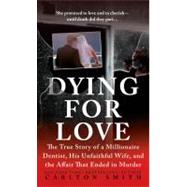
As seen on national TV
A MANIPULATIVE WIFE AND MOTHER
Michele married Yelenic in 1997. But by 2002, the relationship fell apart…and what followed was a bitter, three-year-long battle in which Michele made demands for Yelenic’s money and even accused him—falsely, it would later be shown—of sexual abuse. Michele began dating Kevin Foley, a Pennsylvania State Trooper. When, in 2006, Yelenic was found murdered—slashed to death in his own home—Foley was the prime suspect.
The New copy of this book will include any supplemental materials advertised. Please check the title of the book to determine if it should include any access cards, study guides, lab manuals, CDs, etc.
The Used, Rental and eBook copies of this book are not guaranteed to include any supplemental materials. Typically, only the book itself is included. This is true even if the title states it includes any access cards, study guides, lab manuals, CDs, etc.